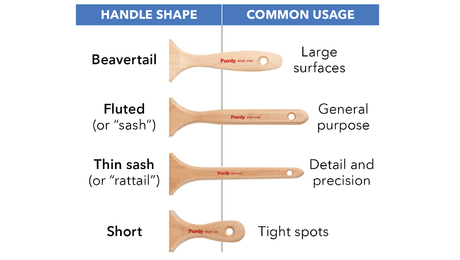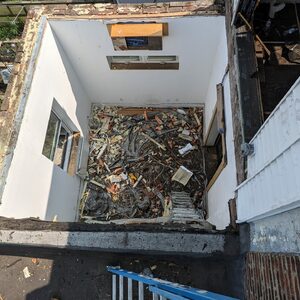*
Need some direction in building a sound resistant wall using 2 x 4. Local Lumber doesn’t have sound strips and the best suggestion is r11 insulation–which I know doesn’t really work that well. Appreciate your experiences.
Thanks, Ray
Discussion Forum
Discussion Forum
Up Next
Video Shorts
Featured Story

Tips for picking the right paintbrush based on paint type, surface, and personal comfort.
Featured Video
How to Install Cable Rail Around Wood-Post CornersHighlights
Fine Homebuilding Magazine
- Home Group
- Antique Trader
- Arts & Crafts Homes
- Bank Note Reporter
- Cabin Life
- Cuisine at Home
- Fine Gardening
- Fine Woodworking
- Green Building Advisor
- Garden Gate
- Horticulture
- Keep Craft Alive
- Log Home Living
- Military Trader/Vehicles
- Numismatic News
- Numismaster
- Old Cars Weekly
- Old House Journal
- Period Homes
- Popular Woodworking
- Script
- ShopNotes
- Sports Collectors Digest
- Threads
- Timber Home Living
- Traditional Building
- Woodsmith
- World Coin News
- Writer's Digest


















Replies
*
1. Add a course of cement board one side under the drywall, filling all joints.
2. Stagger the 2 x 4 studs on a 2 x 6 plate (to decouple the sides)
3. Use mineral wool (sound batts).
4. Use 3/4" drywall, or 5/8" one side 3/4" the other. Use construction adhesive on the studs (screw-glue).
5. Avoid any gaps, for instance, avoid having the drywall up off the floor exposing the bottom plate.
6. Avoid penetrations, such as outlets, especially back-to-back.
Think MASS for acoustic isolation, not fluffy stuff.
Jeff
*Use two different thickness drywalls for each side of the wall (i.e 1/2" on one side and 5/8" on the other). This makes the resonace for each side of the wall different. Sound frequencies that passes easily through the 1/2" will be partially blocked by the 5/8".Jeff is right that mass is the key. You may even want to put 2 layers of drywall up. Not to much more expense and since you only have to finish the top board, labor is pretty easy.Finally, caulk all gaps and corners!!! Use acoustical caulk if you can find it.
*I built a room in my basement to play my drums in using 5/8" sheetrock on one side and a layer of 1/2" over sound board on the other staggering the joints. I used insulation made for noise reduction. It is more expensive but it works great. You can use regular insulation by packing it in tight but be careful, too much can cause the screws to pop through the sheetrock due to the pressure. I also used steel studs instead of wood. This was recommended to me by a sound professional. I have heard conflicting thoughts on this but it works just fine. I don't think it makes a big difference either way. I finished the drywall and caulked the base. The result was better than I expected. This room is completely independent from the house except the basement floor so keep in mind your weakest links, ie the ceiling above your walls and the floor below them. Pack in the insulation. There is also a lot of info on the web. I got a lot of info from news groups. I am really happy with the result and so is my wife. Eric Pearce
*Try the search here. We've had a couple long discussions lately on this subject. Couple of us don't really want to write it all out again.